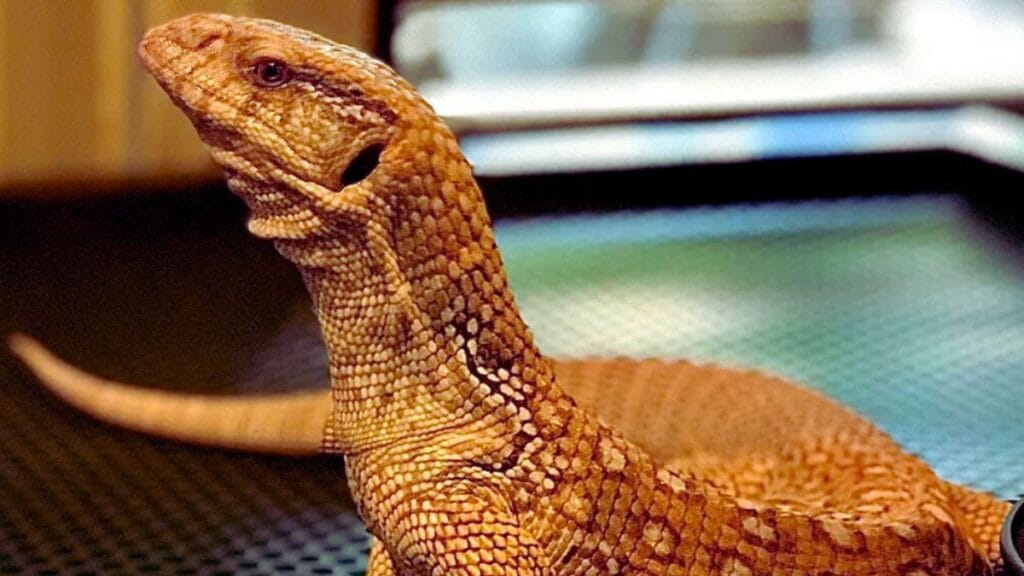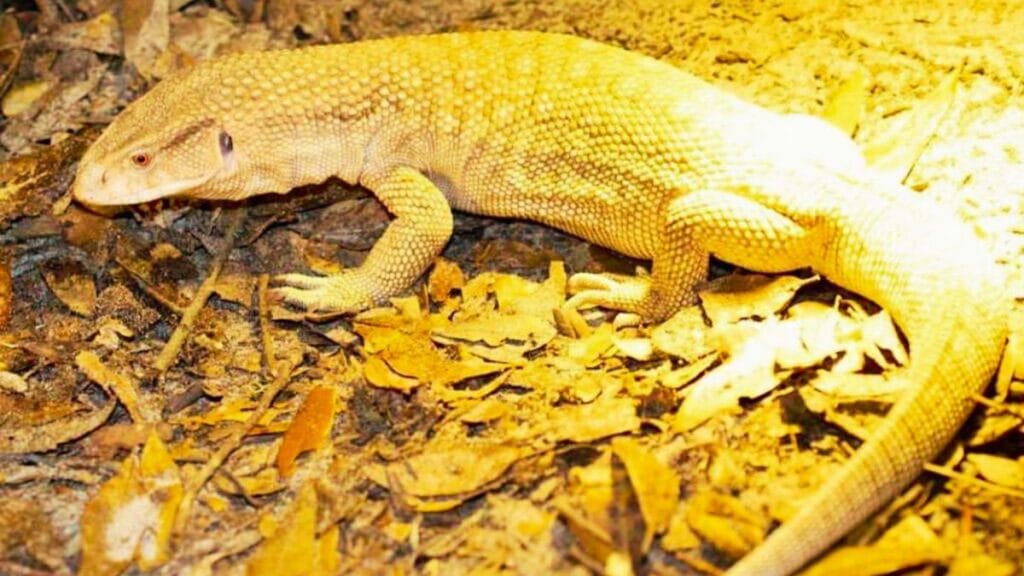Savannah Monitor, also known as Bosc’s monitor, is a medium-sized lizard from Africa known for its unique appearance.

Pet lovers in the West recently preferred these lizards as pets despite their being difficult to find and wild species.
But are Savannah Monitor lizards really good pets or is it just hype? Don’t buy them unless you know the following facts about these lizards.
Table of Contents
7 Facts About Savannah Monitor Lizards:
Savannah Monitors Are Endemic To Africa:
The range of Savannah monitors extends from Senegal to Sudan and in the south, it extends to almost the Congo River and the Great Rift Valley.
These lizards prefer to live in hot deserts and arid areas where the temperature can easily cross 100F.
These Lizards Are Bulky:
Similar to other terrestrial monitor lizards, Savannah Monitors have stout bodies with short, pudgy legs, feet and toes. Sharp and strong claws are present at the end of their toes.
Adult Bosc’s Monitors are over three feet long with light to dark tan or grey colouration. Red highlights with large oval spots of olive colouration are present on their back.
Their head are flat and their jaws are very powerful to crush the skulls and bones of prey. Both upper and lower jaws are lined with hundreds of small and sharp teeth.
Like other monitor lizards, Savannah has a purple forked tongue that helps them to locate the prey. Their skin is thick and pebbly with scales that lie flat.
Savannah Lizards Aren’t Dangerous:
However, Savannah may have strong and painful bites that can cause some harm to humans but they are not dangerous for humans or other large animals.
They may have some venomous teeth but their venoms are not powerful enough to kill or harm humans.
Whenever these lizards feel threatened, they puff up their body and throat, turn sideways and lash their tail to appear larger.
They Are Strictly Carnivorous:
Being carnivorous, Savannah lizards prefer to consume snails, slugs, millipedes, beetles, eggs, and smaller rodents such as mice. These lizards are active hunters and scavangers.
If you keep these lizards as pets, it is advised to feed them insects instead of rodents to avoid obesity. However, don’t feed them with lightning bugs as they are poisonous to the lizards.
They Are Ground Dwelling Species:
Despite living in extremely hot weather conditions, Savannah lizards dig burrows in loose soils to stay cool. Apart from their burrows, they are also found in bushes, low trees, grasslands, and under the rocks in semi-desert areas.
Savannah Monitors’ Have High Life Expectancies:
Savannah lizards have a lifespan of 10-12 years in the wild and in captivity, they can live up to 20 years. Unfortunately, these lizards are very difficult to breed in captivity due to their high mortality rate.
They Are Primarily Solitary Animals:
Savannah Monitors are solitary lizards and don’t live in groups apart from breeding seasons. Males often intimidate others, often wrestle, and injure each other with their sharp teeth.
Also Read: 9 Lesser-Known Facts About Zebra-Tailed Lizards Might Shock You
Are Savannah Monitor Lizards Good Pets?
Savannah Monitors are probably one of the most popular reptile pets in the USA. They are one of the most docile, intelligent, and human-friendly monitor lizards you may ever experience.
However, they don’t thrive in captivity most of the time due to their high mortality rates. Despite that fact, these lizards can be very good pets to experienced reptile owners (especially people who are habituated to lizards); for amateur owners, it can be tricky.

Regular handling from a young age makes them tame, docile, and friendly creatures. They spend most of their time basking in the sun, burrowing in the soil, and eating various insects.
However, you need to handle these lizards carefully and keep young children away from them. If Savannah monitors feel threatened, they can bite with their sharp teeth and scratch with their claws which can be very painful.
Also Read: 4 Pros And Cons To Consider Before Having Bearded Dragons As Pets
Requirements:
Enclosure:
You need to set up a large tank for Savannah monitor lizards. A juvenile lizard can comfortably live in a 55-gallon tank for six months. Once they become adults, owners prefer an 8-foot long by 4-foot wide cage with a 3-foot height.
It is better to keep only one lizard in a cage; otherwise, they can fight, injure, and kill each other.
Substrate:
As these monitor lizards are diggers, you need a soft and loose substrate that is easy to dig.
You can use natural bedding such as soil, organic mix, or a mixture of both that they can burrow down 24 inches deep. The substrates must change every two weeks.
Temperature and Humidity:
You need to maintain an average temperature of 95F-100F temperature for Savannah lizards. The temperature of the basking spot must be between 110F and 130F. The temperature must be above 75F, even at night.
These lizards don’t need a lot of humidity. 60-80% humidity is sufficient for Bosc’s monitors.
You may also need a high-percentage UVB output bulb (8-10% per cent) for 10-12 hours that mimics the sun’s output.
Food And Suppliments:
To prevent obesity, you need to feed juveniles thrice a week and adult Savannah monitors once a week. You can feed them with gut-loaded cricket, cockroaches, earthworms, mealworms, etc.
You must ensure sufficient water supply is present in the cage. The waste food and water must be changed daily to avoid any kind of bacterial or fungal growth.
Use calcium powder on insects and smaller rodents to keep their bones strong. Additionally, low-fat and high-quality (grain-free) canned dog foods you may feed them occasionally.
Also, don’t forget to exercise daily to prevent obesity and other diseases such as parasitic infections, respiratory infections, and metabolic bone diseases.
Also Read: 7 Fun Facts About The Viral Frilled Lizards Will Surprise You
Also Read: 9 Facts About Iguanas You Must Know Before You Pet Them
Also Read: Are Panther Chameleons Suitable Pets For Households?